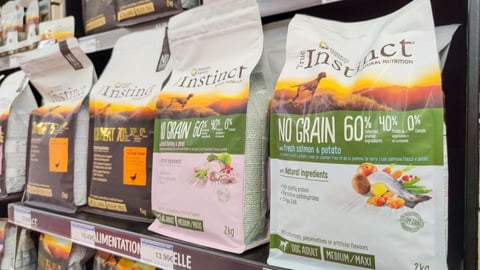New Balance Extends Pandemic Pilot to Steer Supply Chain and Labor Roller Coaster
New Balance is replacing its entire supply chain planning suite in a move to aggressively improve forecast accuracy and workforce efficiencies.
Grappling with inventory accuracy is a longtime challenge for consumer goods companies, and it’s only been exacerbated by the supply chain crisis. The footwear and apparel brand and retailer expects the deployment to not only improve accuracy but also help maintain labor costs as revenue grows, Dave Wheeler, New Balance chief operating officer, tells CGT.
It all, naturally, comes down to speed and agility: “The agility capability of being able to detect changes — whether it's consumer behavior or changes in demand — and then the speed of being able to execute quickly once you’ve identified those changes.”
An extension of a pilot deployed at the beginning of the pandemic, the Boston-headquartered company will integrate o9 Solutions’ technology across its North Americas operations by midyear, followed by deployments in Europe, China, Japan, and elsewhere in phases over the next three to four years.
[See also: Rescuing a Supply Chain Under Siege]
The company first partnered with o9 in January 2020 to pilot a demand planning project in partnership with a key top-tier retailer. As part of this, the retailer shared sell-through data for New Balance to integrate into the forecast and better position inventory.
A number of reasons prompted New Balance to implement a new supply chain planning suite, Wheeler says, chief of which includes the need for greater connectivity across organizational silos. As is common with large consumer goods companies, its legacy systems require quite a bit of internal collaboration to ensure customer and supplier satisfaction.
With this retail partner, which sells about 3,500 New Balance footwear styles, the specific challenges included understanding their forecast and the type of information flowing in. By baking the retailer’s own forecast and forecasting algorithm into the pilot, and then integrating the sell-through data, New Balance improved its upstream supply planning capabilities.
By creating a digital twin of the network, it was also able to better match inventory with capacity and demand.
For the wider deployment, New Balance will deploy four main capabilities: demand planning, inventory management, supply planning, and S&OP/IBP capabilities. Wheeler describes its goals as relatively aggressive, focused on forecast accuracies, workforce efficiencies, planning cycle times, and faster inventory turns.
The suite will help New Balance pull in, understand, and act upon demand signals more quickly; advanced machine learning improves forecast accuracy, in turn enabling New Balance to better utilize its factories and lower overall costs to consumers.
Eliminating some of the peaks and valleys out of the planning cycle for the factories will also keep costs in check and trickle down to its total landed costs.
“We expect to grow relatively quickly from a revenue standpoint, and rather than grow our workforce in proportion to our revenue, our expectation is we should be able to grow at a slower rate from a labor standpoint because of the efficiency.”
[See also: Nike Accelerates Digital Supply Chain Investments]
New Balance, which operates branded, outlet, and licensed stores, anticipates the new technology will improve fill rates and service levels for both its store fleet and retail partners.
“Ultimately, because my goal is to better load our factories by knowing our upfront signal, [this will] help us maintain our costs because those peaks and valleys really do hurt us from a cost per unit standpoint.”
Supply Chain Roller Coaster
New Balance has fared comparatively well during the pandemic’s demand tumult, Wheeler says, including the initial March 2020 supply chain shutdown and then exponential demand growth fueled by increased discretionary consumer spending and leisure time.
The COO also remains optimistic about New Balance’s capabilities when it comes to managing the most recent supply chain crisis. “There are a lot of things that are outside of our control,” he notes, including an ability to shorten the time it takes to get a shipment between China and the U.S.; however, the new system will influence all supply and demand planning across its four U.S. factories, as well as its international source factories.
When asked for advice for other consumer goods companies seeking to improve their visibility and forecasting, Wheeler concedes there’s no silver bullet. Instead, he points to the Agile method, which the company has transformed into using over the last two years and has been crucial in its operational success — enabling teams to iterate more quickly, as well as learn and adjust on a more real-time basis vs. a master plan project.
[See also: Biden Supply Chain Strain Initiatives Include Better Data Sharing]
He also trumpets the value of investing around master data accuracy, as well as aiming for a full integrated planning suite. “Our speed is that master data accuracy, and having one single source of the truth is really foundational.”
New Balance is working toward having a supply chain control tower, with the second and third phase of the deployment including modules to bring it closer to this fully integrated suite.
“In that context, I would say trying to do it all at once is probably not the best approach,” he advises. “You have to take the most critical portions and treat it as a multi-phased project that you can build upon, and that's the path that we're headed down right now.”






